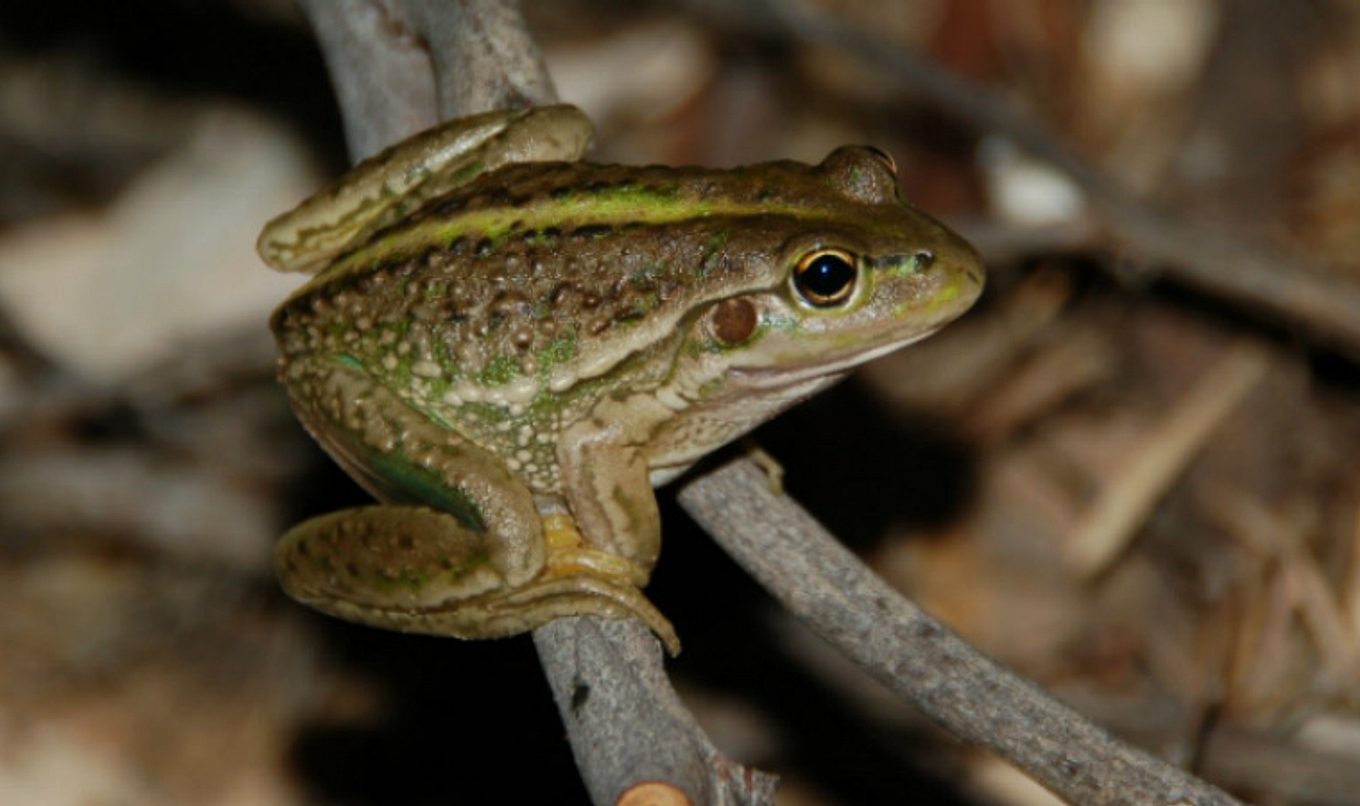Vulnerable frog species found thriving in Riverland wetland
A number of nationally vulnerable southern bell frogs (Litoria raniformis) have been found during recent monitoring at South Australia’s Overland Corner Wetland.

Located adjacent to the River Murray immediately downstream of Lock 3, the site is part of the cluster of wetlands that surround and extend the Banrock Station Ramsar Wetland site.
Natural Resources SA Murray-Darling Basin (SAMDB) Wetland Project Officer Sam Hardy said Overland Corner Wetland is one of the regional strongholds for the southern bell frog and the population responds well to delivery of water for the environment.
“Frog monitoring typically takes place after dark when male frogs begin calling to attract a mate, and both the species of frog and abundance are identified via call recognition,” Mr Hardy said.
The monitoring group is made up of representatives of the Natural Resources SAMDB Floodplains and Wetlands Team, the Overland Corner Wetland Group and Berri Barmera Landcare who successfully identified six frog species;
- Southern bell frog (L. raniformis);
- Eastern banjo frog (Limnodynastes dumerilii);
- Eastern sign-bearing froglet (Crinia parinsignifera);
- Long-thumbed frog (Limnodynastes fletcheri);
- Peron's tree frog (Litoria peronii); and
- Spotted grass frog (Limnodynastes tasmaniensis).
“We also know a number of threatened fauna and flora species occur at Overland Corner Wetland including the nationally vulnerable regent parrot (Polytelis anthopeplus),” Mr Hardy said.
Overland Corner Wetland is described as a ‘temporary’ wetland, situated above the standing weir pool operating range of Lock 3 and only receives water from the river in a high-flow event.
Between high-flow events, the wetland needs a little help to keep it in a healthy condition and support a diverse range of important flora and fauna.
Natural Resources SAMDB Floodplain and Wetlands Team used water for the environment and funding support from the Commonwealth Environmental Water Holder (CEWH) to deliver water into 18 wetland sites across the Riverland over the last spring/summer period to help restore and protect these important ecological assets.
This project is supported by the South Australian Murray-Darling Basin Natural Resources Management Board through funding from the Australian Government’s National Landcare Program and NRM levies.

